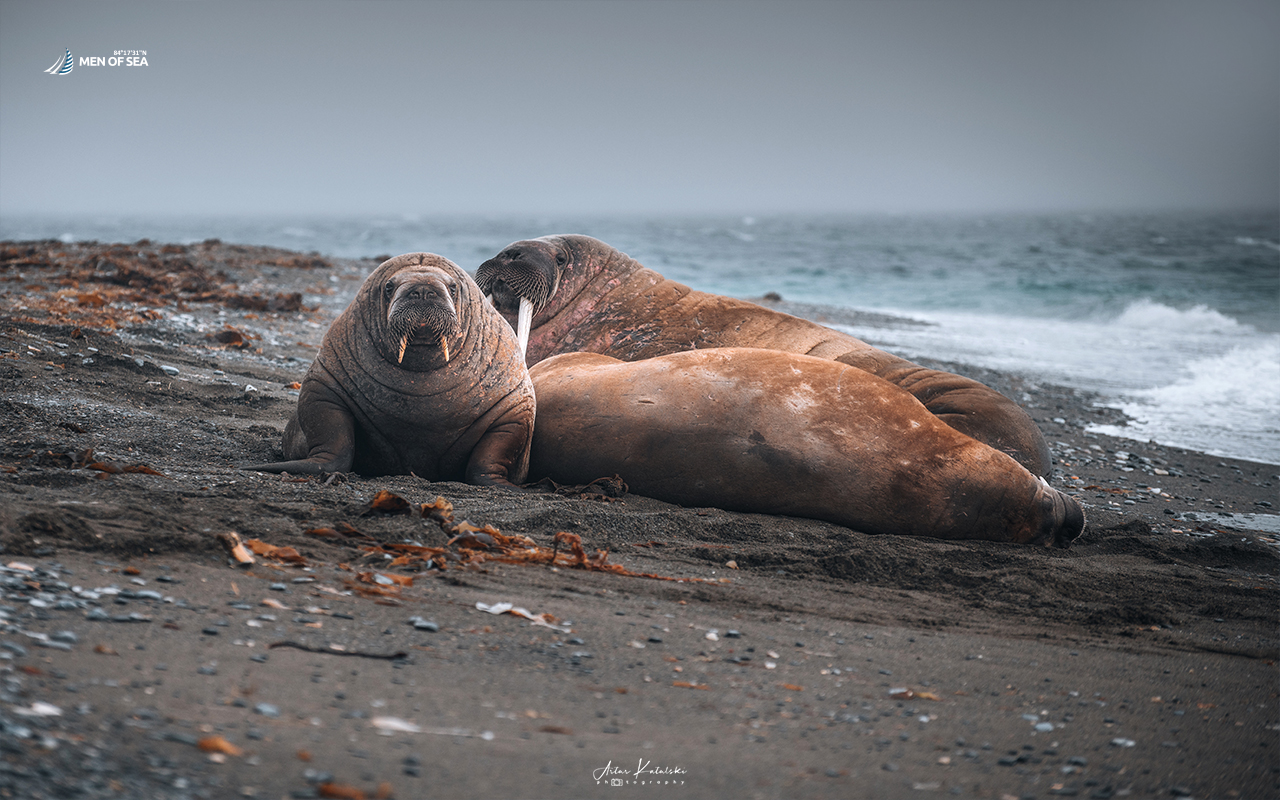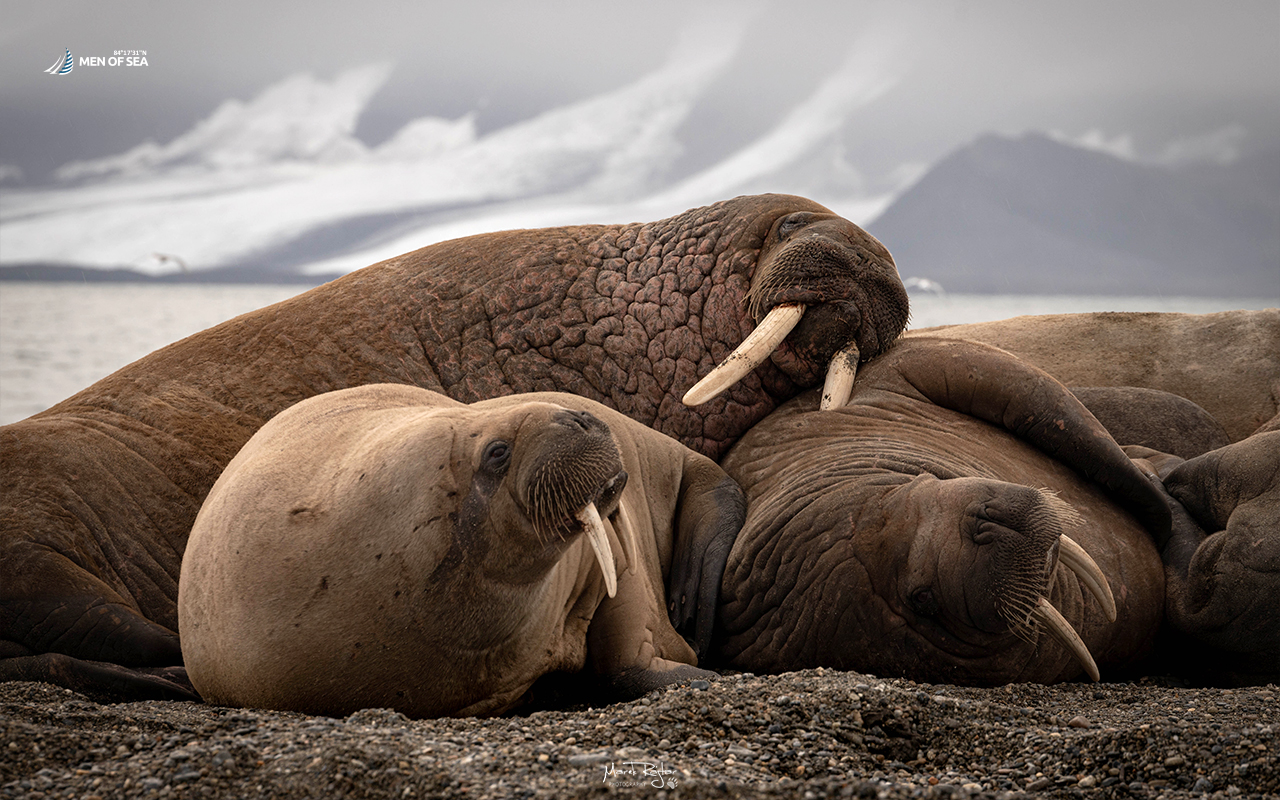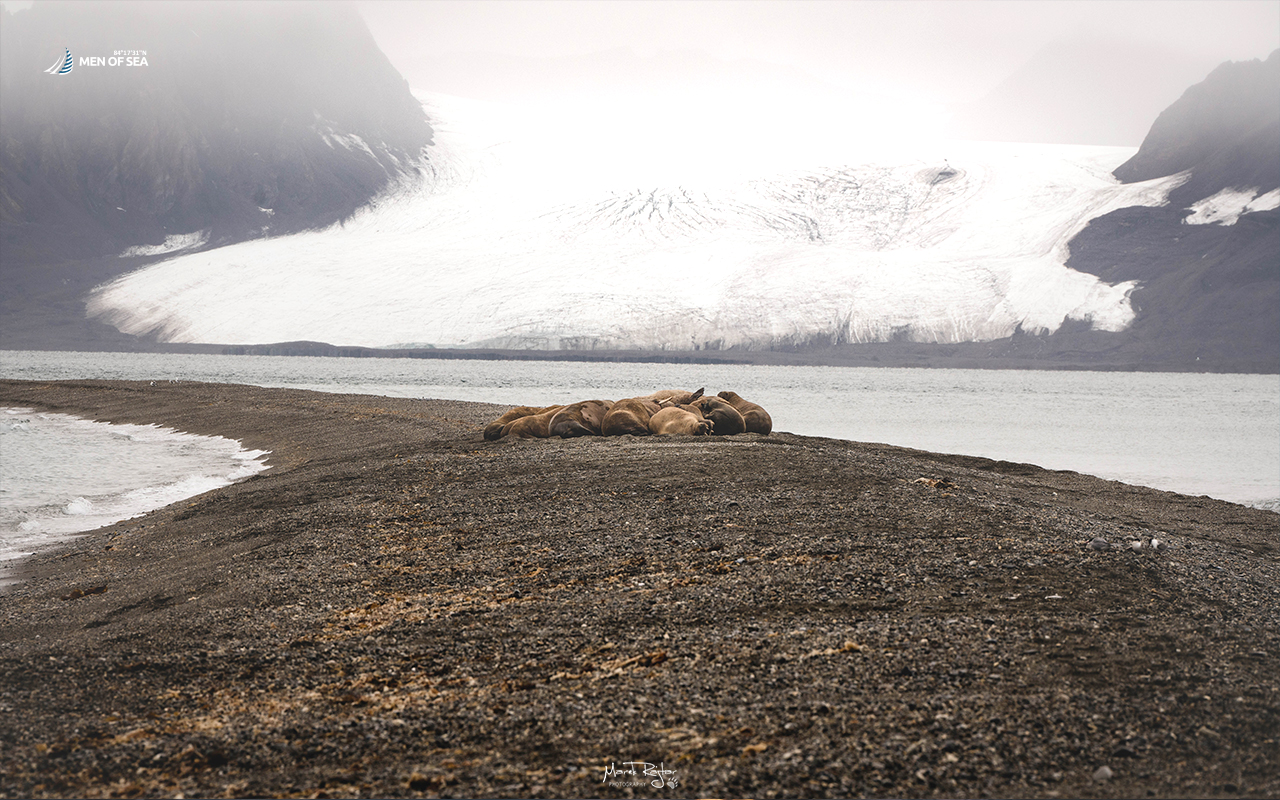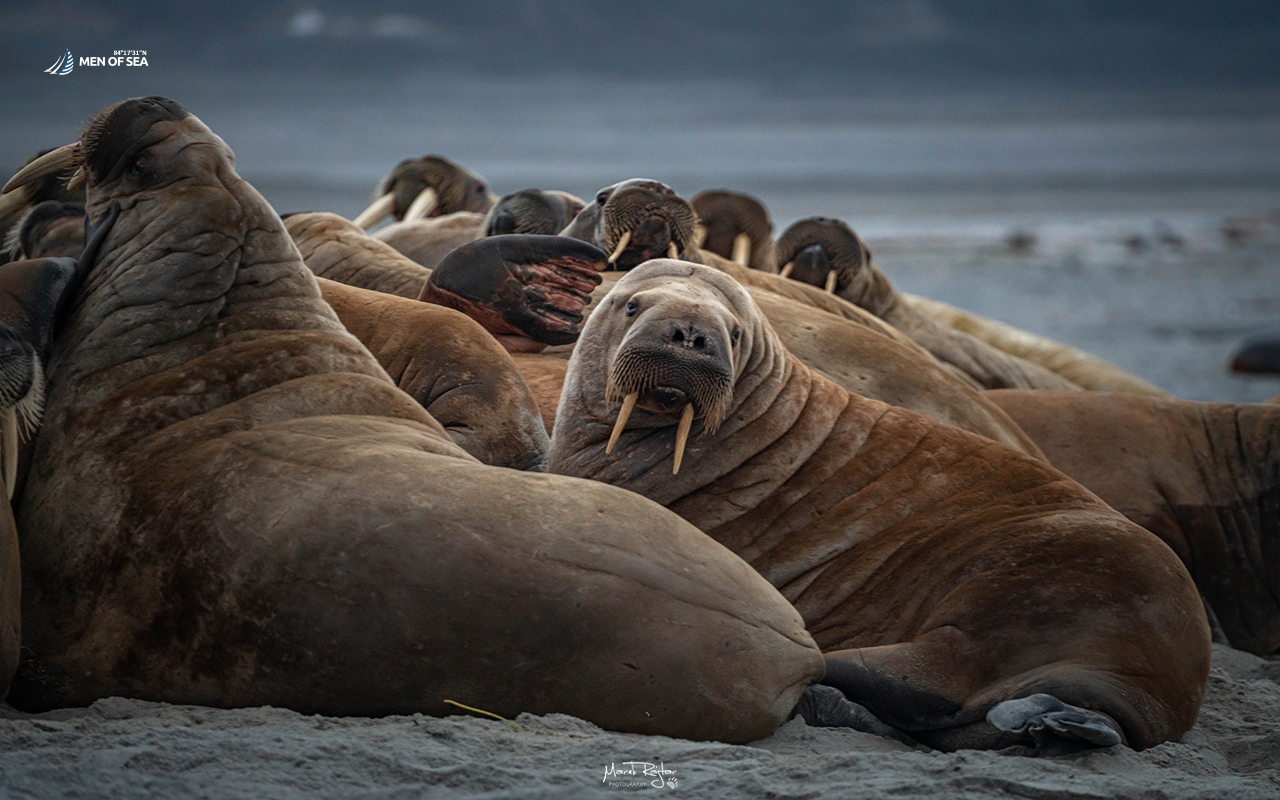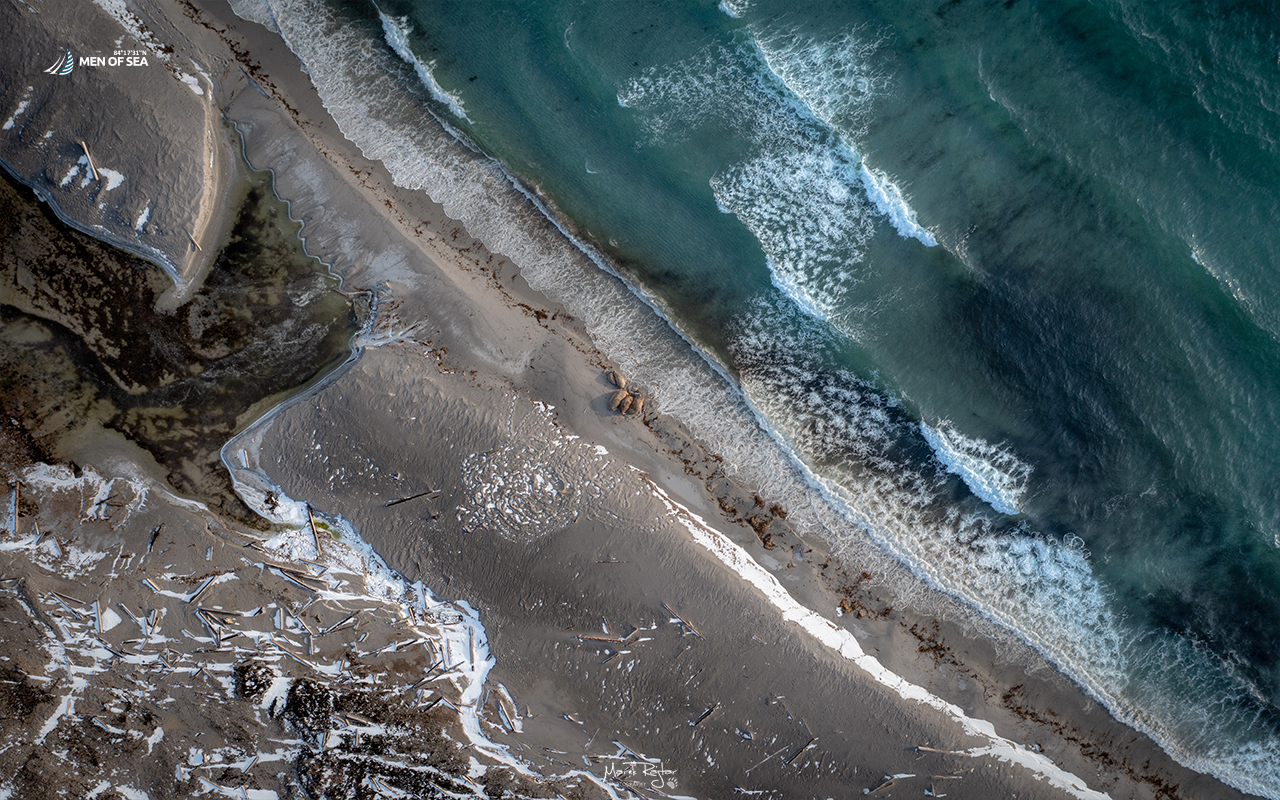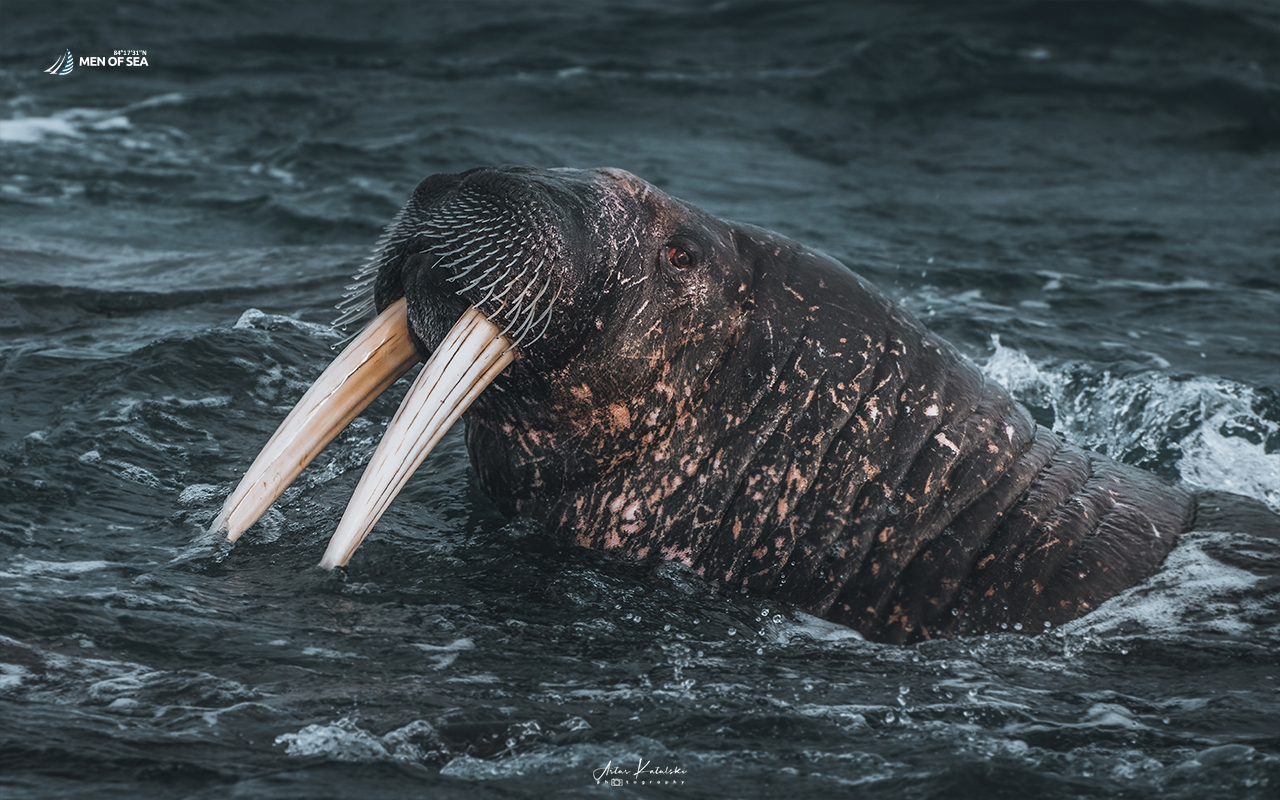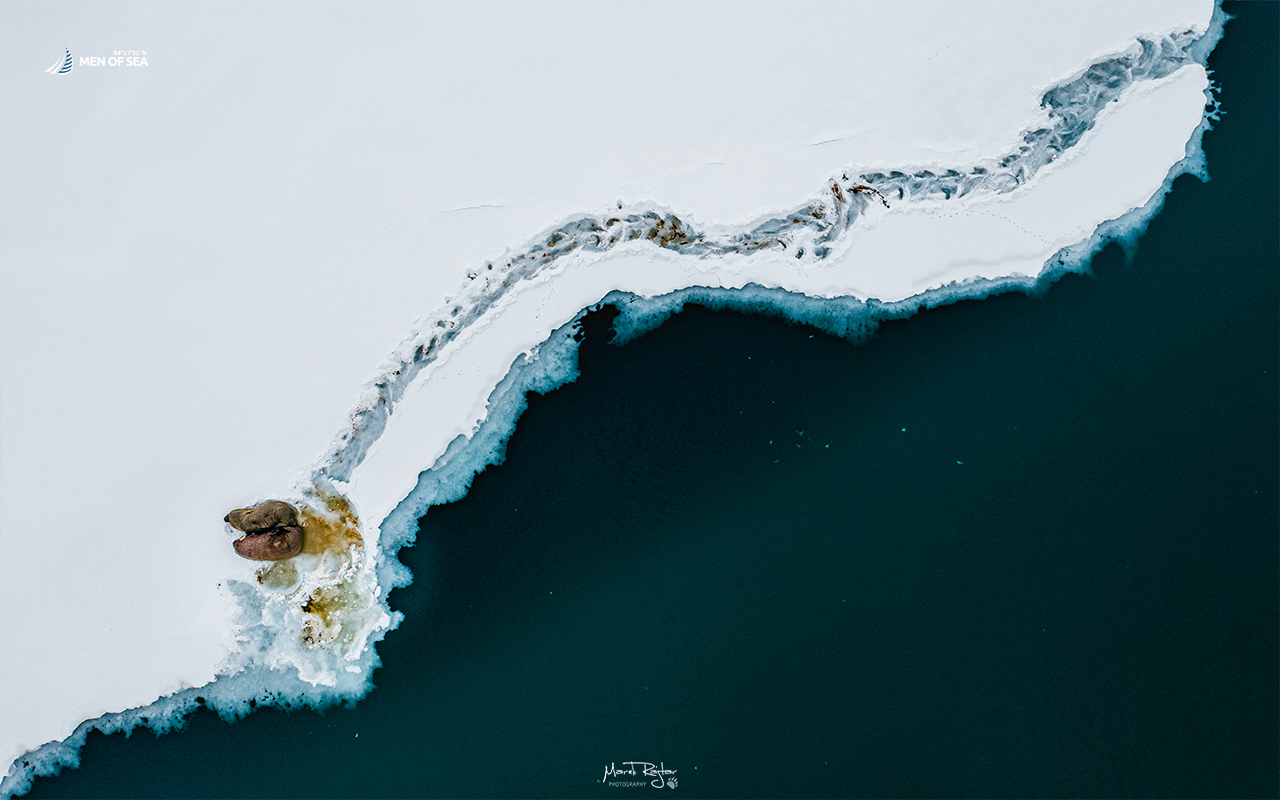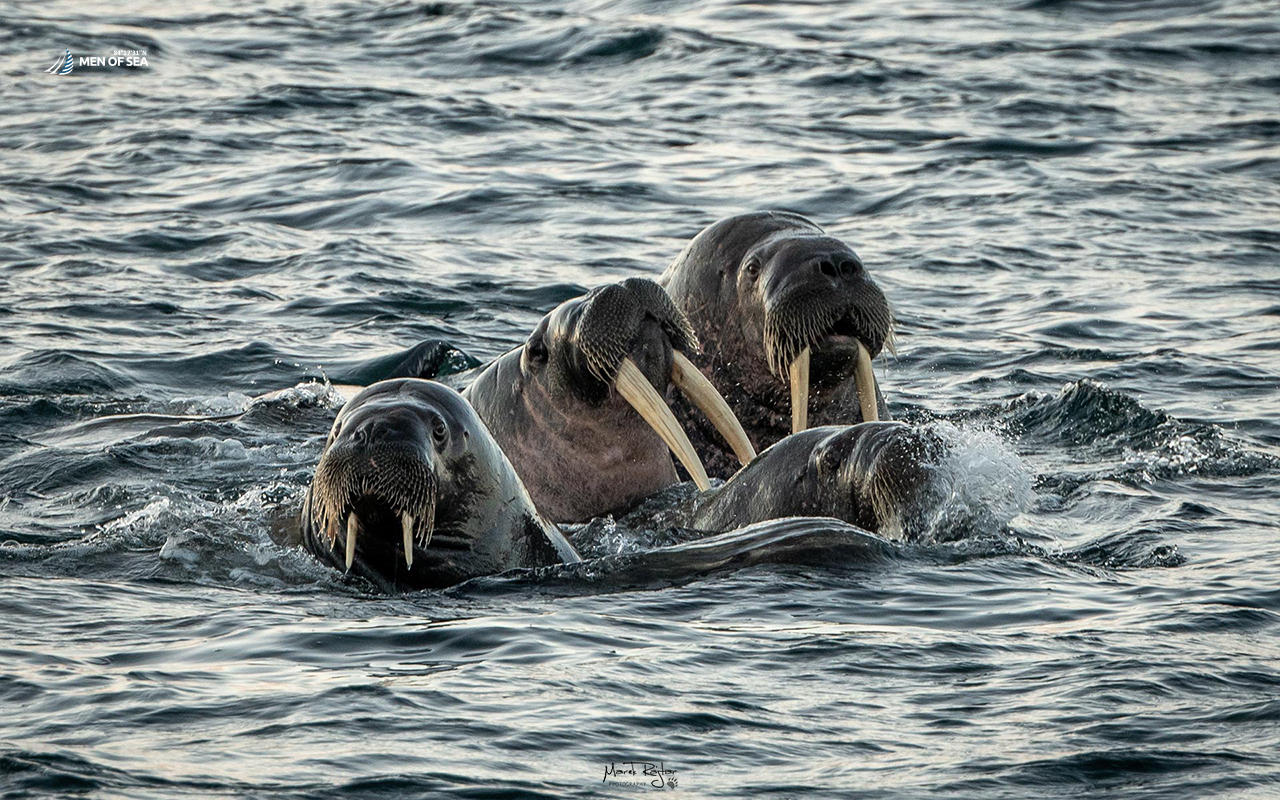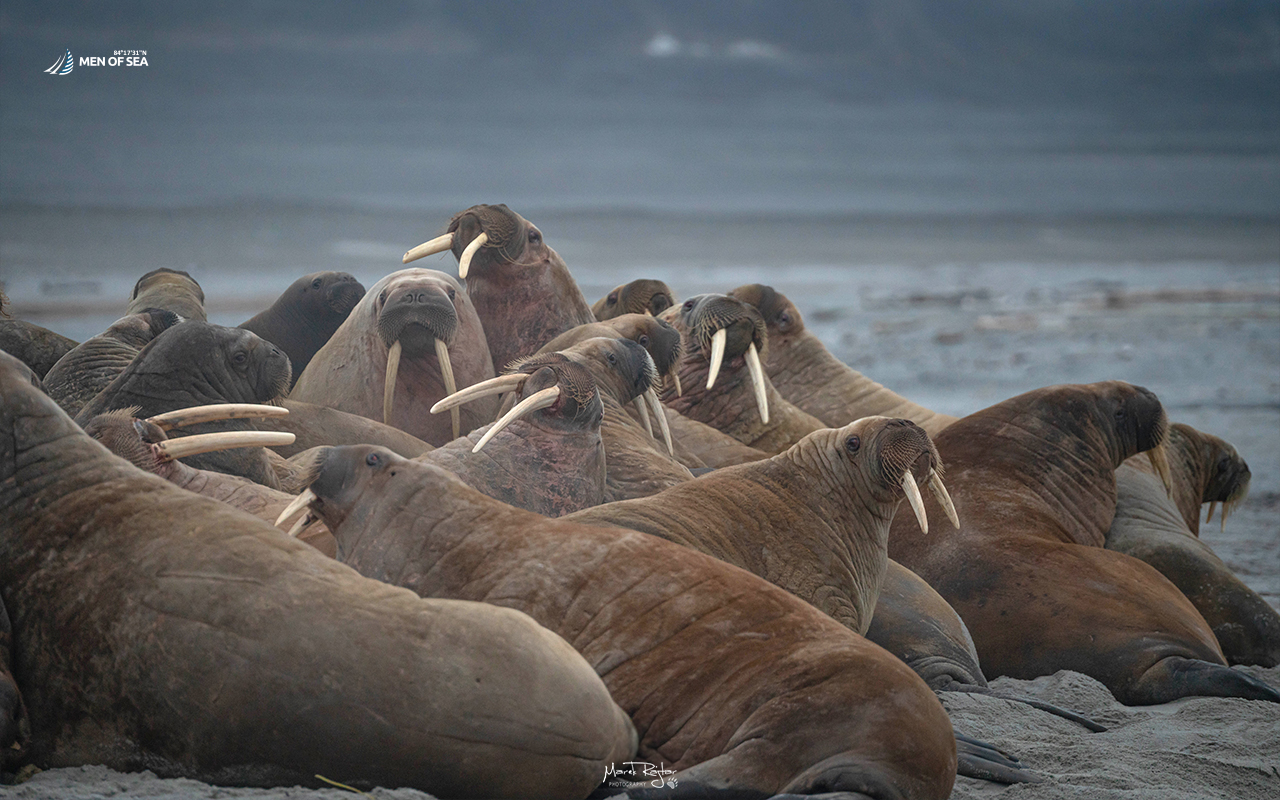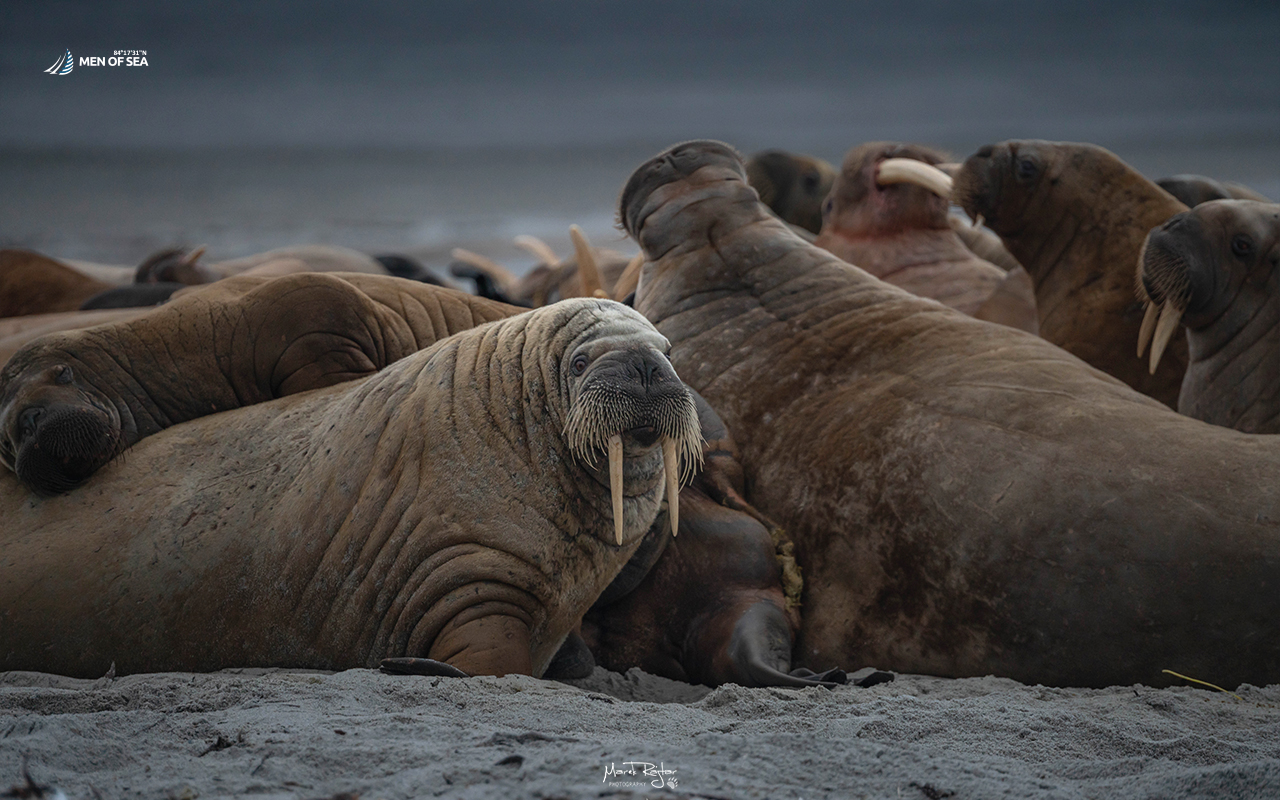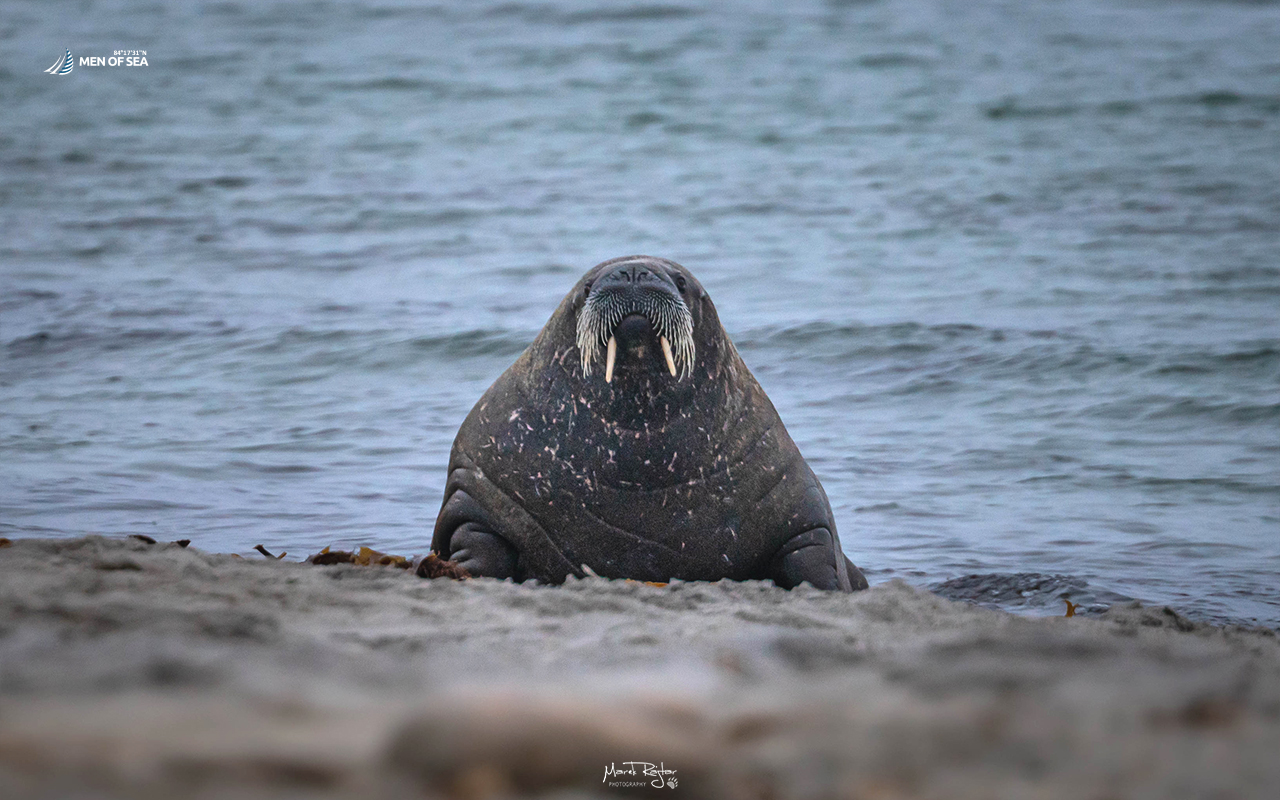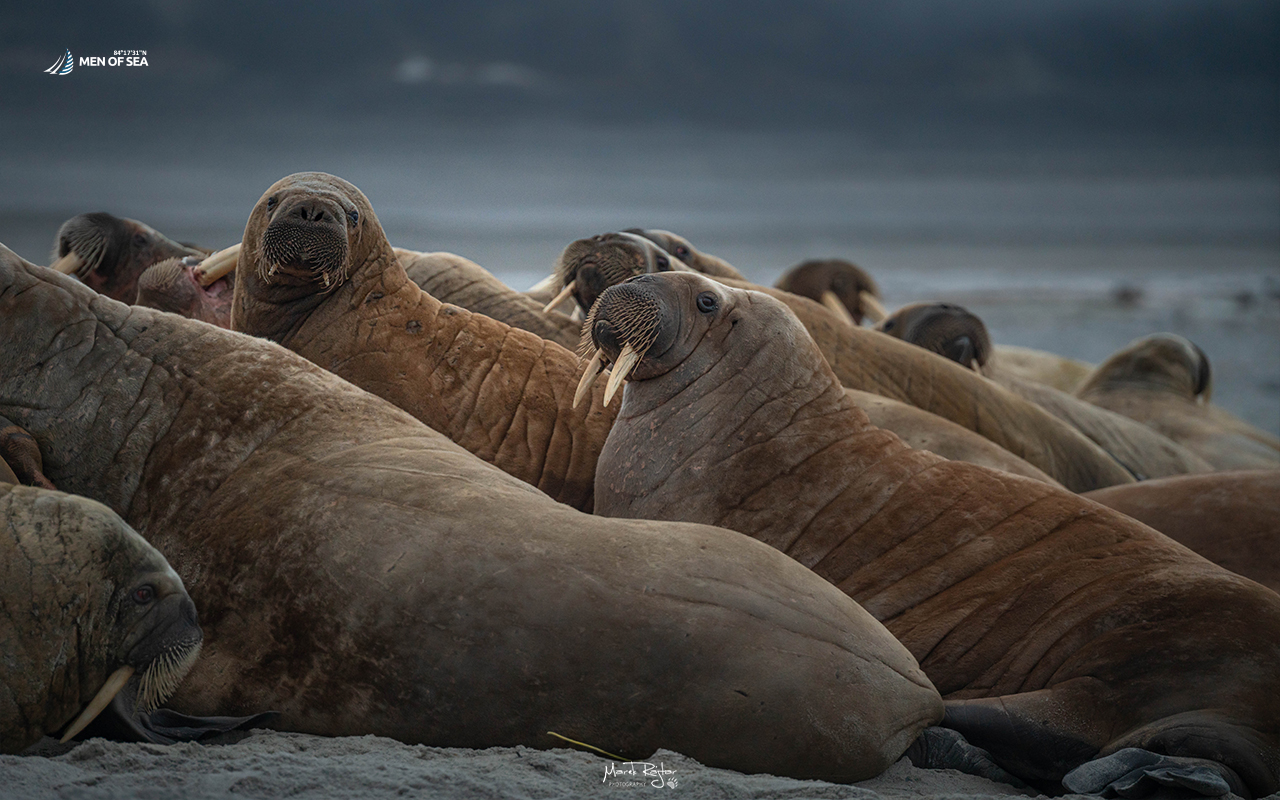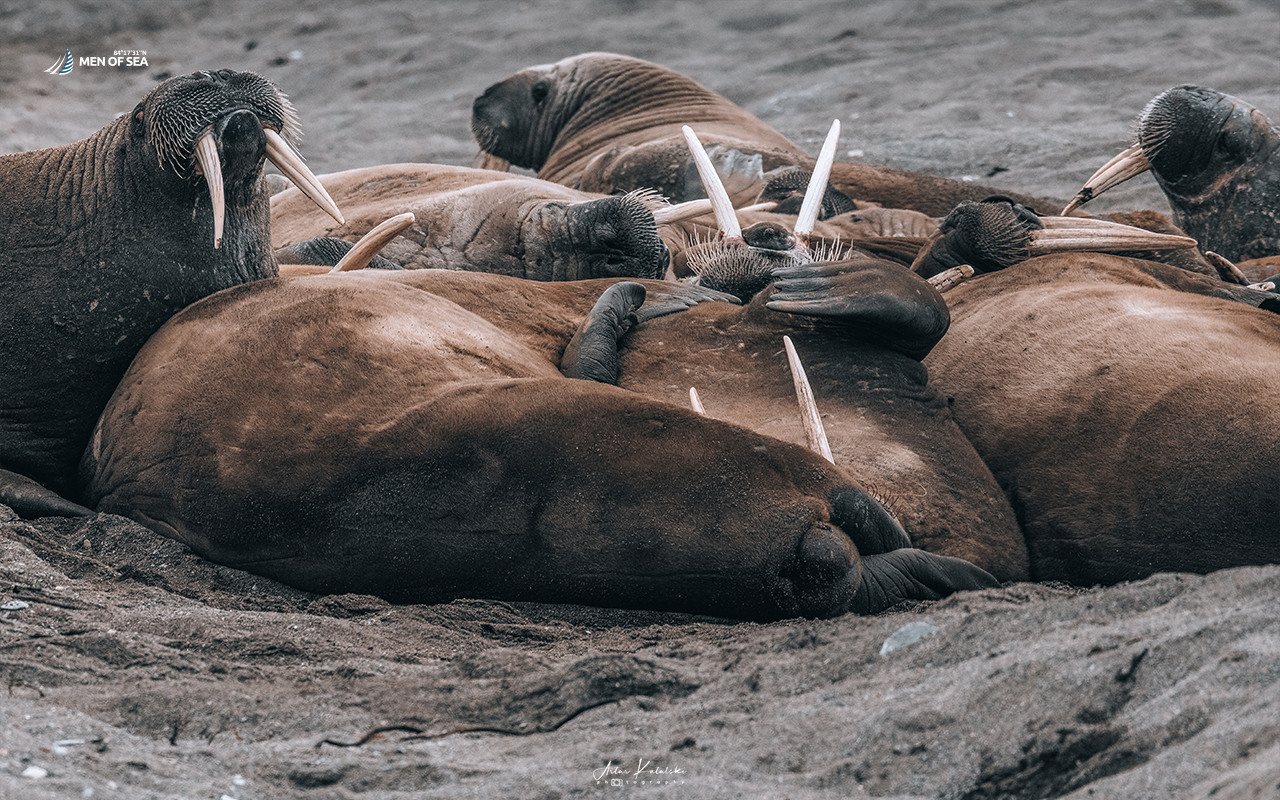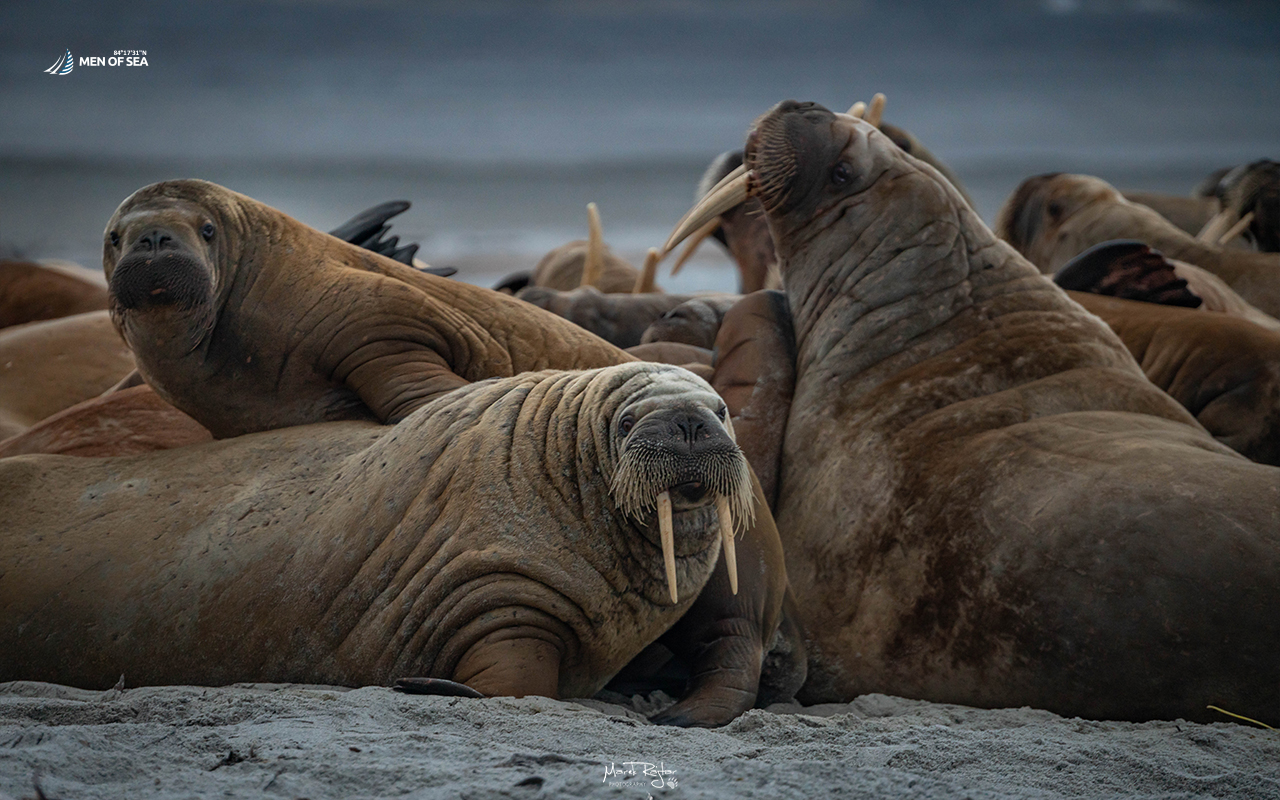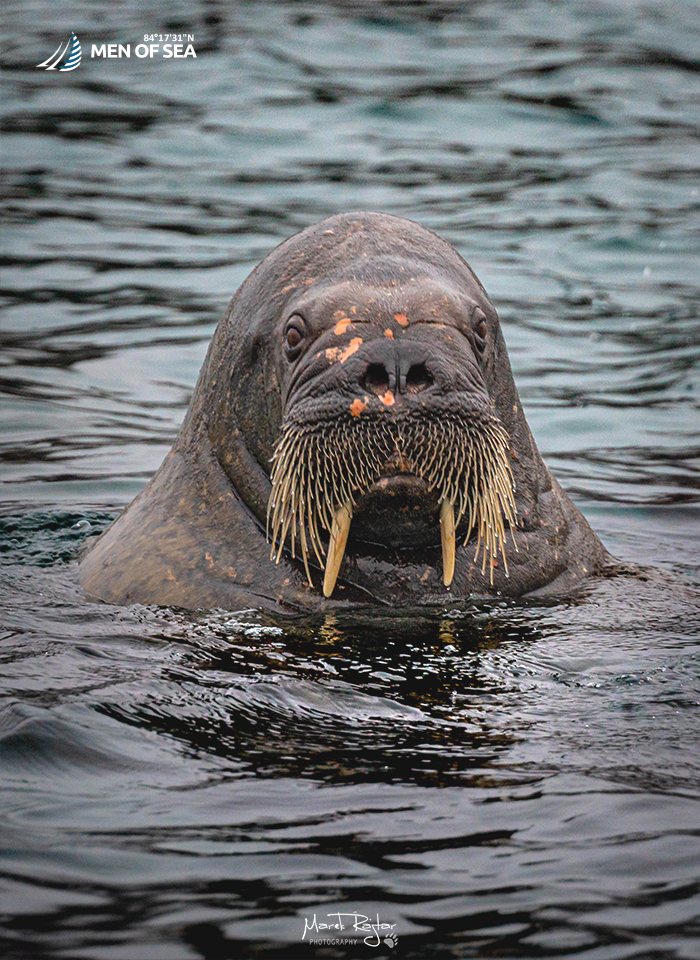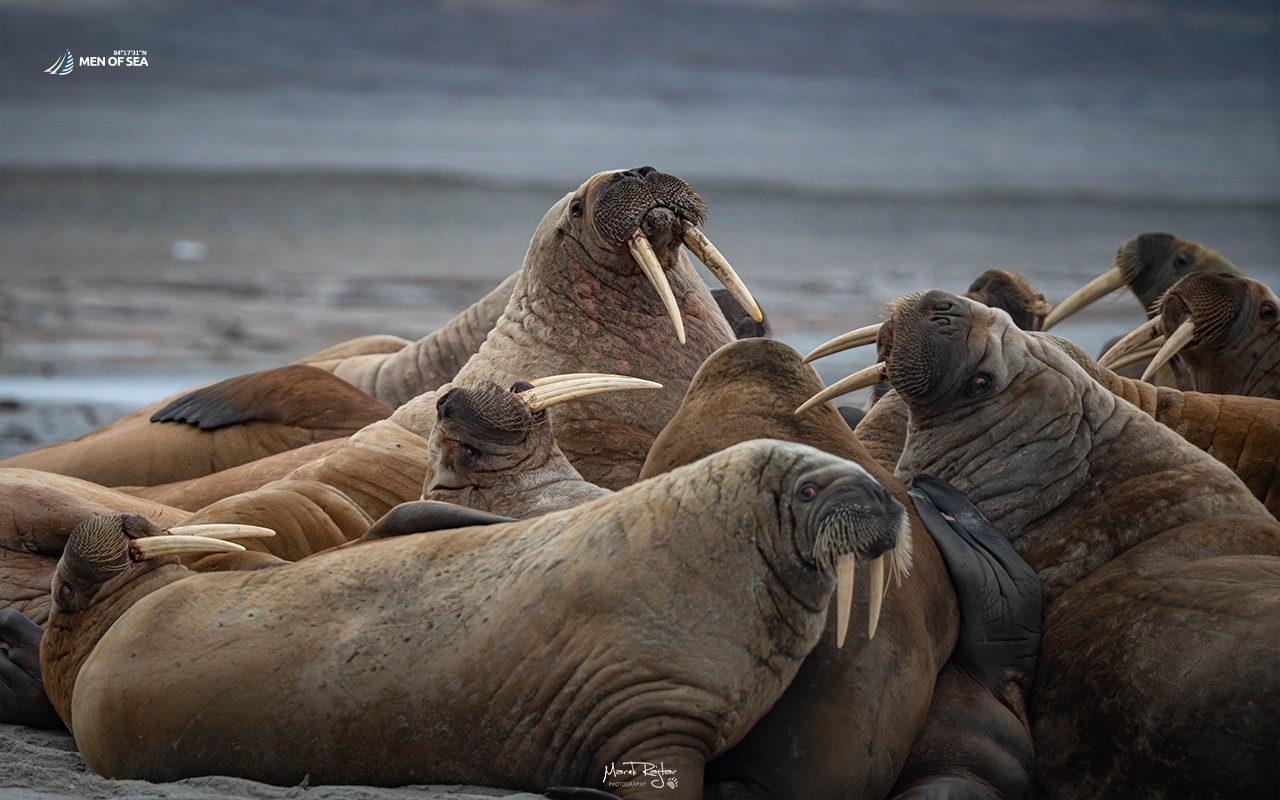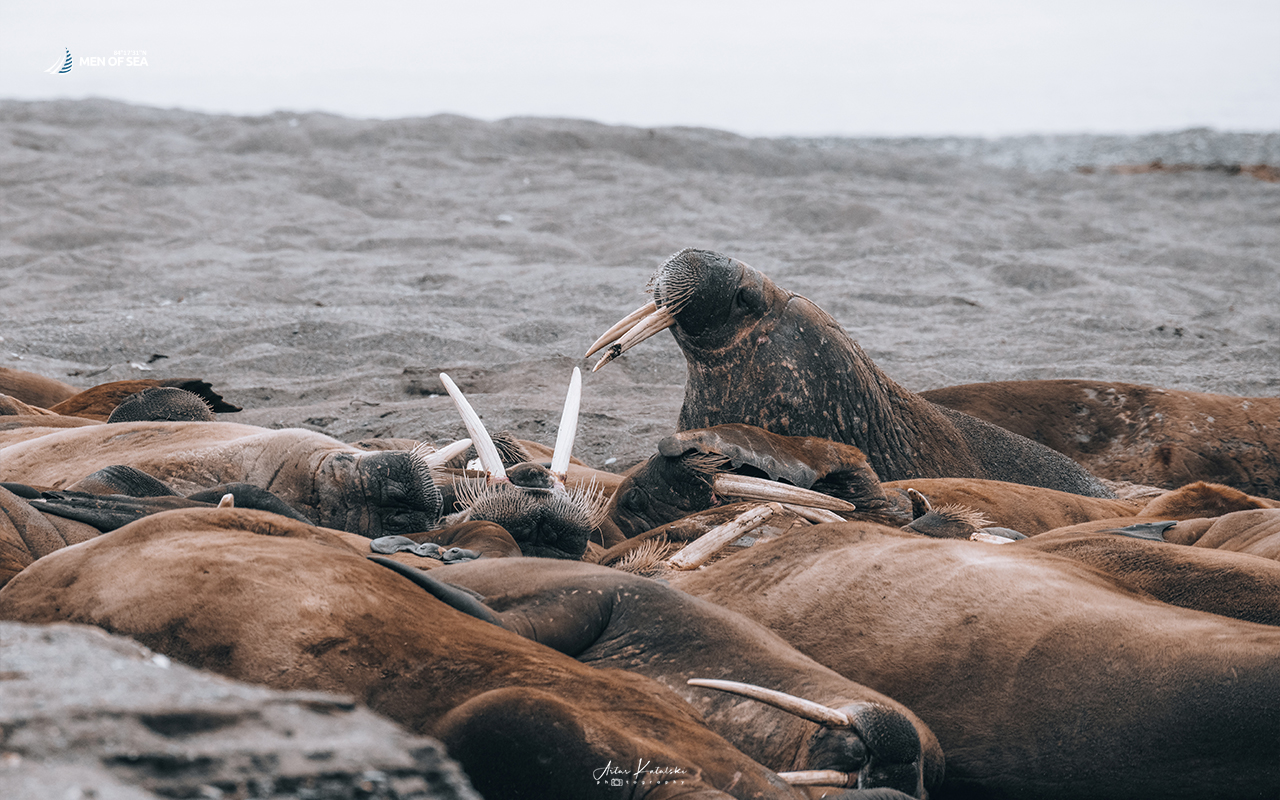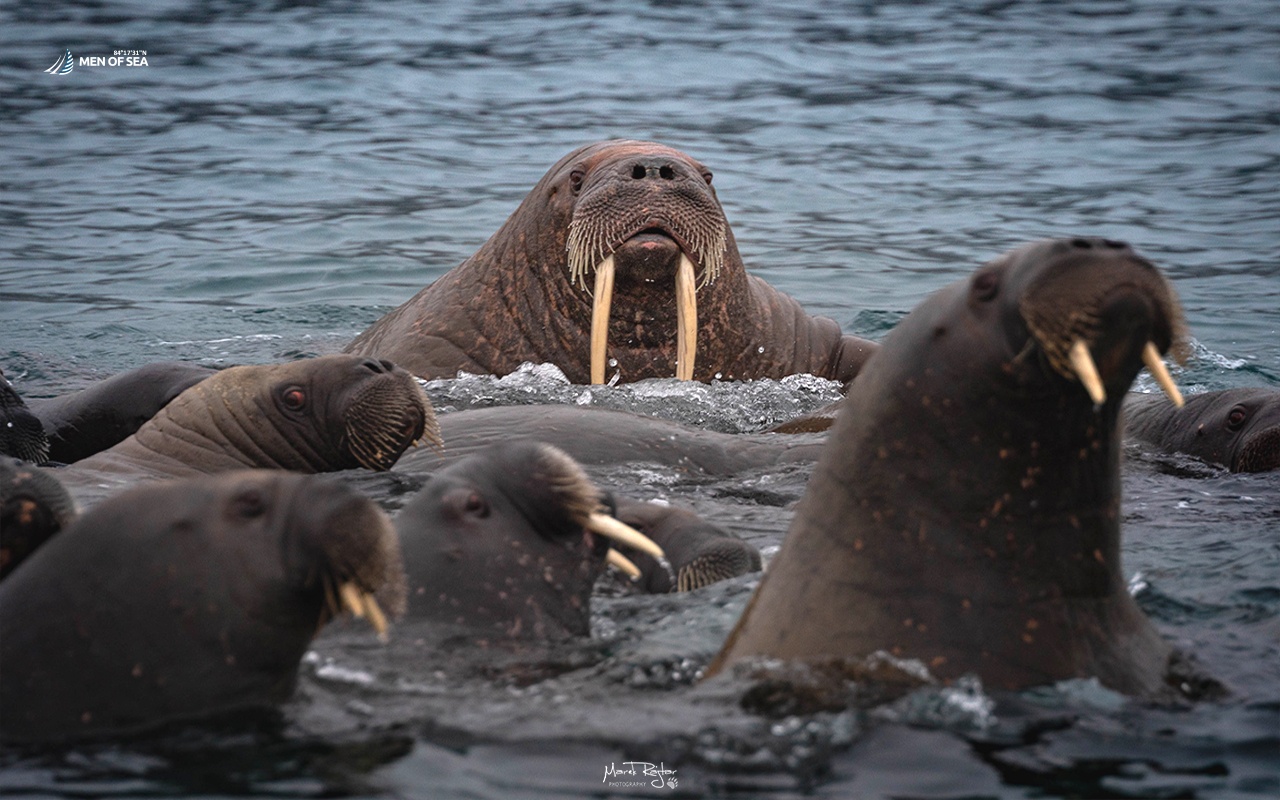
WALRUSES
Symbol of the Arctic
PODSTAWOWE INFORMACJE
The walrus is an Arctic giant. An adult individual can weigh from 600 kilograms to as much as 1.5 tonnes, which is even twice the weight of a polar bear. It can measure 3.5 meters, and beneath its wrinkled brown and pink skin there is a significant amount of blubber, allowing it to survive in the Arctic world. Blubber protects it from freezing and enables it to take long baths in icy water, where it cools down nearly 30 times faster than on land.
When observed on land, they seem to be very cumbersome animals. However, in water, they are excellent swimmers and divers. Their spindle-shaped, streamlined bodies are equipped with large flippers and distinctive whiskers, which enable them to locate food on the dark seabed. Walrus whiskers, called vibrissae, are highly vascularized and innervated sensory organs arranged in rows, with their number ranging from 400 to 700. They excellently locate food hidden in the mud, which is then cleaned by strong water jets from the nostrils and sucked up by the mouth in the shape of a pump.
The basis of their diet consists of mollusks and crustaceans, but in reality, walruses eat anything they can find: clams, shrimps, snails, crabs, sea cucumbers, and worms. They have to work hard because they should consume about 60 kilograms of food per day.
So what are the two large tusks, symbolizing walruses, used for? Probably not for finding food. Walruses use their tusks to haul themselves out of water onto ice and also as weapons in skirmishes with predators. They also help establish hierarchy within the herd. Walrus tusks grow throughout their lives and can reach up to a meter in length, but they are prone to breakage. If this happens, they regrow very slowly. A polar bear has little chance of killing a large healthy walrus.
Walruses can stay submerged for 10 minutes, but according to data published by Norwegian scientists, record dives reached 37 minutes and a depth of 450 meters. Research also shows that walruses can swim continuously for over 80 hours.
Walruses can live up to 40 years. Females have one offspring every 2-3 years. The young ones can swim immediately after birth and remain with the mother for over two years. Until recently, their population in Svalbard was almost completely destroyed by hunting, but fortunately, in the 1970s, Norwegians ceased these practices, and the population has since recovered.
Encounters with Walruses
On Svalbard we encounter one of the two subspecies of these animals: Atlantic walruses. Their cousins – Pacific walruses – inhabit the regions of Alaska and Russia. When spring arrives and the pack ice melts, they move north, where they spend the entire summer.
We manage to find them in water when they direct characteristic blows into the air, and also when they bask in colonies on one of many beaches. At such times, if conditions permit, we disembark on land, and from a safe distance, we can observe their behaviour. Besides the sight, we may experience their characteristic “odour” as they often release gases. During encounters with walruses, we must be cautious. Walruses are not naturally aggressive; they often swim in groups under the yacht for a visit, but if they feel threatened or their territory is violated, they may attack. They can easily pierce a zodiac, as we have had an opportunity to experience.
Distinguishing between a female and a male walrus is difficult because, apart from the breeding season, male attributes are concealed from the cold inside their bodies. Perhaps it’s just as well, as the bone located in the penis can be up to 60 cm long.
Trips connected with WALRUSES
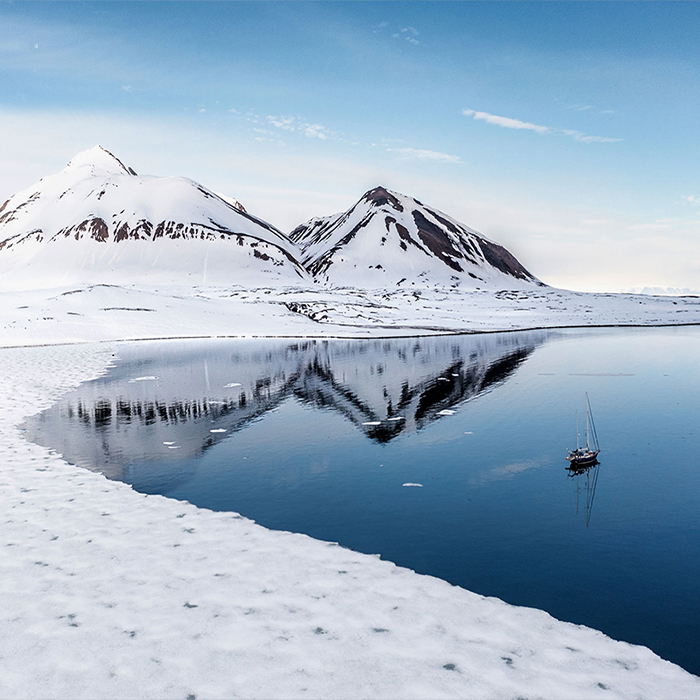
Across the Arctic Seas

12 dni
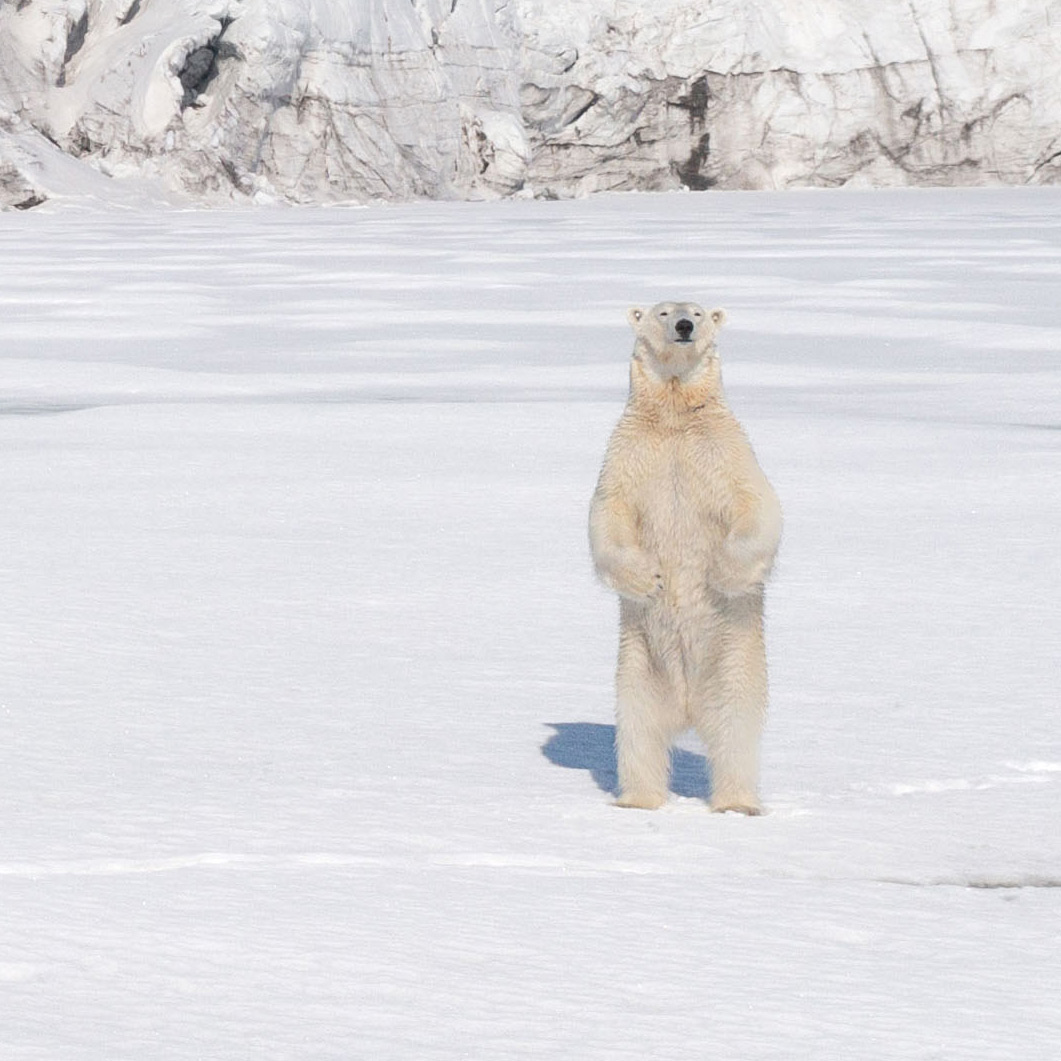
Animals of Svalbard Photo Safari #1

8 dni

Animals of Svalbard Photo Safari #2

8 dni

Animals of Svalbard Photo Safari #3

8 dni
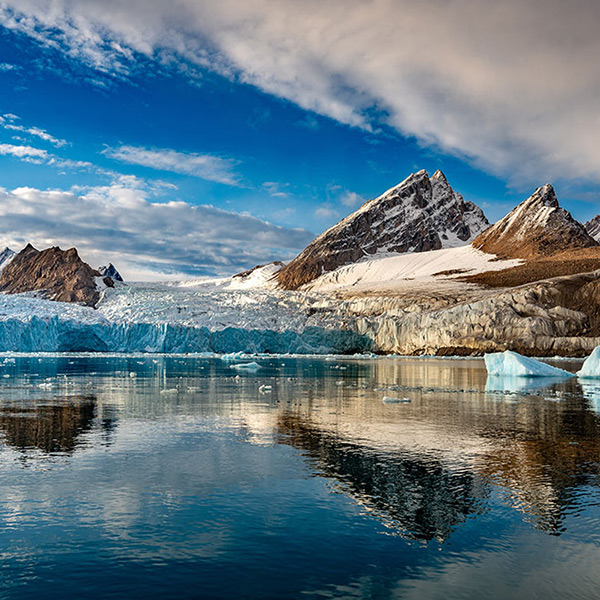
Spitsbergen in a week #5

8 dni
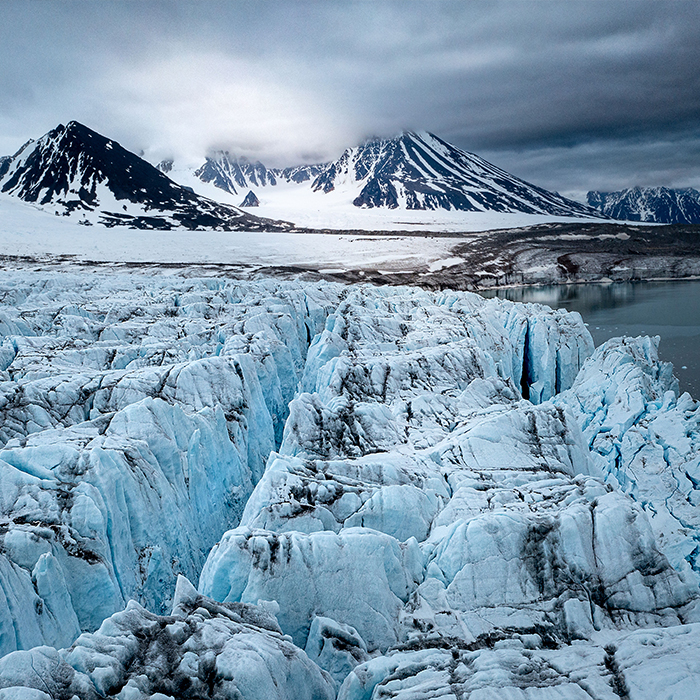
To the Edge of the North #1

10 dni

To the Edge of the North #2

10 dni

Spitsbergen in a week #6

8 dni

To the Edge of the North #4

10 dni

Spitsbergen in a week #8

8 dni
